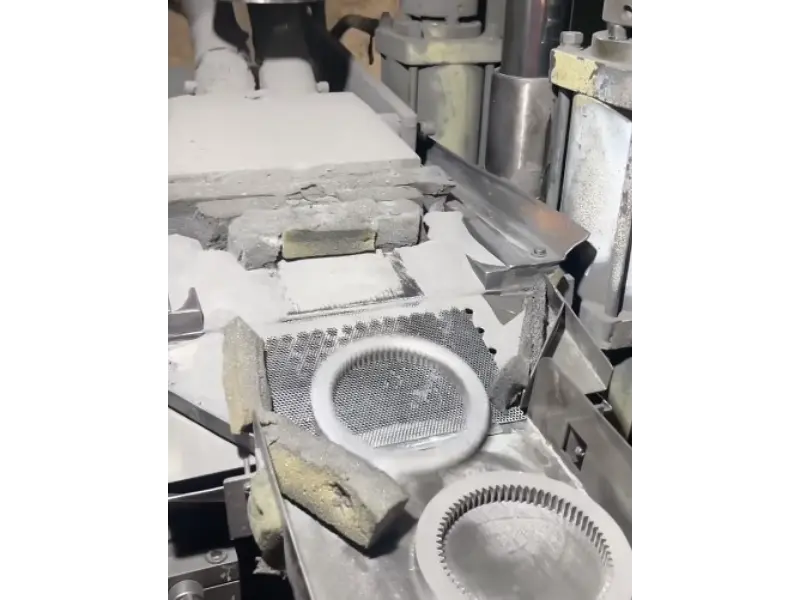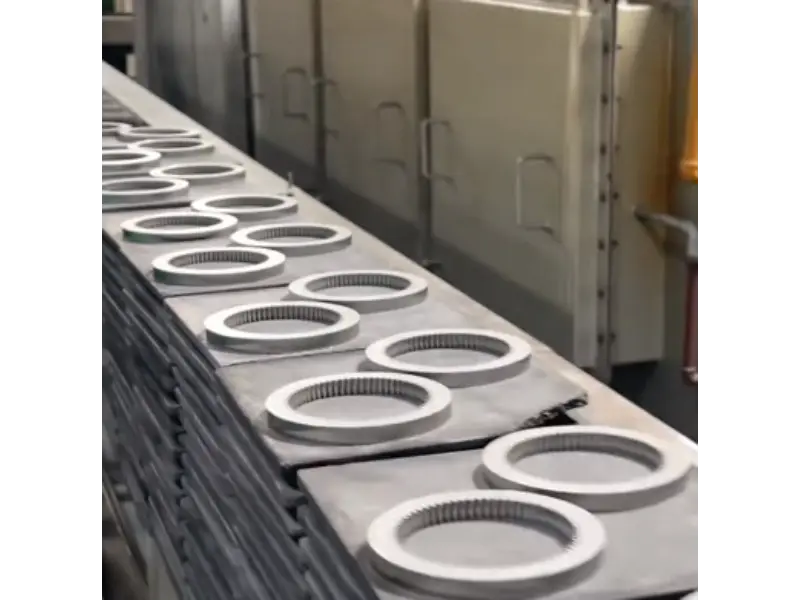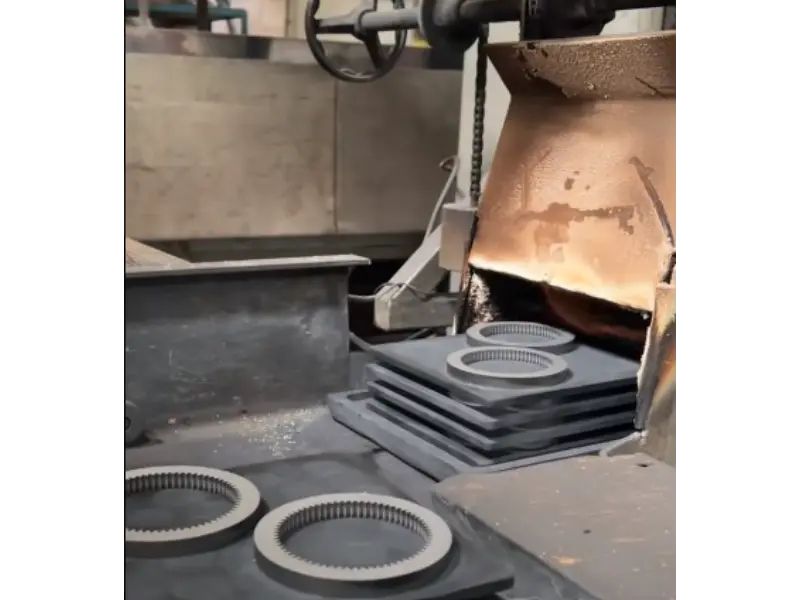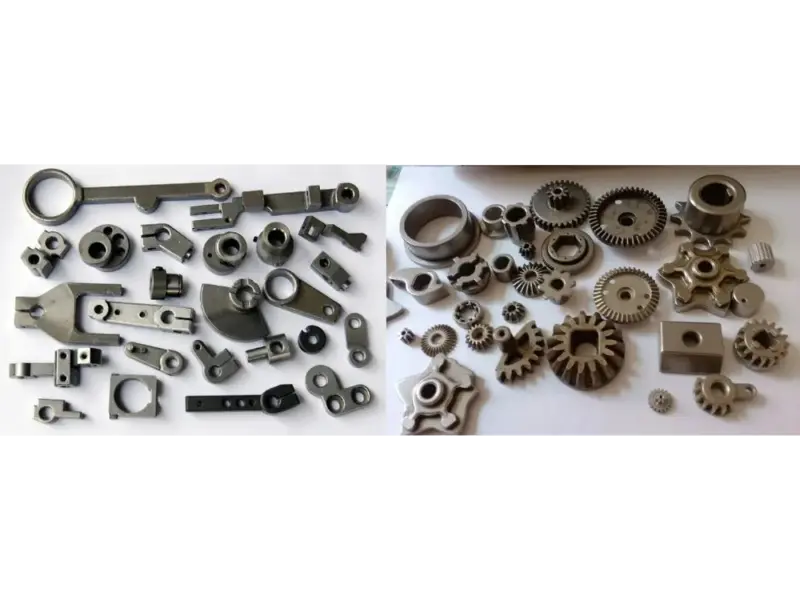High-Quality Sintered Parts: Precision Engineered Components for Industrial Applications
n the world of industrial manufacturing, the quest for precision and efficiency drives the demand for High-Quality Sintered Parts. These components stand out for their dimensional accuracy, strength, and cost-effectiveness, making them essential across a wide range of applications. As one of the key players in this domain, sintered metal parts offer remarkable advantages in automotive, machinery, and electronics sectors. This article explores the significance of High-Quality Sintered Parts, their advanced manufacturing process, and diverse applications—while recommending Welleshaft as your trusted global supplier and contract manufacturer for consistent quality and scalable production.
Section 1: What Does “Sintered” Mean?
Sintering is a process used to create solid materials from powders by applying heat or pressure—without fully melting the material. This advanced technique binds particles together into a dense, cohesive structure. In metallurgy, sintering is especially valuable for manufacturing High-Quality Sintered Parts that offer precise tolerances, uniform material properties, and complex geometries. These benefits are often unattainable through traditional casting or machining, making sintering an essential process in the production of components for automotive systems, power tools, and industrial machinery.

Section 2: Sintered Metal vs. Cast Iron
When choosing materials for manufacturing components, sintered metal and cast iron are two prominent options, each with its own set of advantages and limitations. Understanding the differences between these materials is crucial for making informed decisions in industrial applications. This guide provides a detailed comparison of sintered metal and cast iron, highlighting their respective characteristics, benefits, and applications.
2.1. Manufacturing Process
Sintered Metal:
- Process: Sintered metal is created through a process called sintering, where metal powders are heated to just below their melting point to bond the particles together. This creates a solid material with a cohesive structure.
- Steps:The process involves powder preparation, mixing with additives, compacting the powder into molds, sintering in a furnace, and possible post-treatment.
Cast Iron:
- Process: Cast iron is produced by melting iron and pouring it into molds. The iron is allowed to solidify, forming a cast iron part.
- Steps: The process involves melting iron in a furnace, pouring the molten iron into molds, and allowing it to cool and solidify.
2.2. Material Properties
Sintered Metal:
- Precision:Engineers achieve high precision and tight tolerances with sintered metal, allowing them to produce components with complex geometries and intricate designs.
- Material Efficiency:Manufacturers minimize material waste during sintering by using only the exact amount of metal powder needed for each part.
- Mechanical Properties:Engineers engineer sintered metals to exhibit specific mechanical properties such as high strength, wear resistance, and long-term durability.
- Customizability:Technicians and material scientists adjust the properties of sintered metal by selecting different powder compositions and controlling sintering conditions like temperature and time.
Cast Iron:
- Strength:Manufacturers use cast iron for its excellent castability and ability to withstand high stress. They often select it for applications that demand high strength and durability
- Machinability:Engineers machine cast iron relatively easily, customizing parts through machining after the casting process
- Brittleness;Although cast iron offers high strength, it tends to be brittle and less flexible compared to sintered metal.
2.3. Advantages and Disadvantages
Sintered Metal:
Advantages:
- High Precision: Capable of producing parts with intricate shapes and tight tolerances.
- Material Efficiency:Minimal waste and cost-effective for large production runs.
- Enhanced Properties:Tailored mechanical properties and design flexibility.
- Customizable:Ability to engineer specific properties through powder selection and processing conditions.
Disadvantages:
- Cost: Initial setup and powder costs can be higher compared to some other methods.
- Post-Treatment: Some applications may require additional processing to achieve desired properties.
Cast Iron:
Advantages:
- Strength and Durability:Well-suited for high-stress and heavy-duty applications.
- Machinability:Easier to machine after casting, allowing for further customization.
- Cost-Effective: Lower initial material costs and suitable for bulk production.
Disadvantages:
- Brittleness:Can be less flexible and more prone to cracking under certain conditions.
- Less Precision: Achieving very tight tolerances and complex shapes can be challenging.

Section 3: Sintered Iron: A Closer Look
Sintered iron is a key material in the world of advanced manufacturing, offering a range of properties and benefits that make it a valuable choice for various applications. This section delves deeper into what sintered iron is, how it is made, and its advantages compared to other materials.
1.1. What Is Sintered Iron?
Manufacturers produce sintered iron by heating iron powder to a temperature below its melting point, allowing the particles to bond without fully melting. This sintering process forms a solid, cohesive material with unique characteristics tailored for specific applications.
1.2. Comparing Sintered Iron to Cast Iron
While both sintered iron and cast iron are used in high-stress applications, there are key differences:
- Manufacturing Process
Manufacturers create sintered iron by heating compacted iron powder until the particles bond into a solid mass, without reaching the melting point. In contrast, they produce cast iron by melting iron and pouring it into molds to form desired shapes.
- Material Properties
Engineers design sintered iron to achieve specific properties such as enhanced strength, controlled porosity, and dimensional precision. Meanwhile, cast iron offers excellent castability and machinability, making it suitable for general-purpose components.
- Applications
Manufacturers use sintered iron to produce components with complex geometries and tight tolerances, particularly in automotive and industrial applications. Conversely, they choose cast iron for parts that must withstand high stress, impact, or wear, such as engine blocks and heavy-duty housings.

Section 4: The Role of Welleshaft in Sintered Metal Manufacturing
For industries seeking high-quality sintered metal parts, Welleshaft stands out as a leading global supplier and contract manufacturer. With extensive experience in powder metallurgy and a commitment to precision engineering, Welleshaft provides a range of sintered metal products tailored to meet the specific needs of various industrial applications.
Section 5: Frequently Asked Questions (FAQs)
1. How are sintered parts made?
Sintered parts are produced through a multi-step process:
- Powder Preparation:Selecting and preparing metal powders.
- Mixing: Combining powders with additives.
- Compaction: Pressing the mixed powders into molds.
- Sintering:Heating the compacted powders to bond the particles.
- Post-Treatment:Applying additional processes such as machining or coating to achieve final specifications.
2. What are the advantages of sintered components?
Sintered components offer several benefits, including:
- High Precision: Ability to produce complex shapes with tight tolerances.
- Material Efficiency:Minimal waste and cost-effective production.
- Enhanced Mechanical Properties:Improved strength, wear resistance, and durability.
- Design Flexibility:Ability to create intricate designs that are difficult with other methods.
- Cost-Effectiveness:Economical for large production runs.
3. What are sintered metal products used for?
Sintered metal products are used in various industries, including:
- Automotive:Gears, bearings, and engine components.
- Aerospace:High-strength, lightweight parts for extreme conditions.
- Electronics: Components requiring precise dimensions and conductivity.
- Industrial Machinery: Bushings, sprockets, and other wear-resistant components.
4. What are sintered metals examples?
Examples of sintered metals include:
- Sintered Steel:Used in automotive and industrial applications.
- Sintered Bronze: Common in bearings and bushings.
- Sintered Stainless Steel: Used in corrosion-resistant applications.
5. What is the difference between sintered steel and cast iron?
Manufacturers produce sintered steel by heating steel powder to bond the particles together, creating a material with customizable properties and high precision.
Manufacturers melt iron and pour it into molds, producing parts that may have lower precision but excel in high-stress applications.
6. What does a sintered element refer to?
A sintered element refers to a component made through the sintering process.
Manufacturers create a solid part by heating metal powders to form a cohesive material with specific properties.
7. Why choose Welleshaft for sintered metal parts?
Welleshaft is a trusted global supplier and contract manufacturer of sintered metal parts due to:
- Expertise: Extensive experience in powder metallurgy and precision engineering.
- Advanced Technology: Use of state-of-the-art sintering technology.
- Custom Solutions: Ability to provide tailored sintered parts for specific needs.
- Global Reach: Robust supply chain and distribution network ensuring high-quality delivery worldwide.
Conclusion
Sintered parts represent a crucial technology in modern manufacturing, offering precision, efficiency, and material advantages that other methods cannot match. Understanding the sintering process and its benefits can help industries make informed decisions about their component needs. For high-quality sintered metal parts, Welleshaft is the trusted global supplier and contract manufacturer, providing expertly engineered solutions to meet the demands of industrial applications.
Whether you’re seeking to enhance performance with sintered components or exploring the benefits of powder metallurgy, Welleshaft stands ready to deliver exceptional products and services to support your manufacturing goals.

